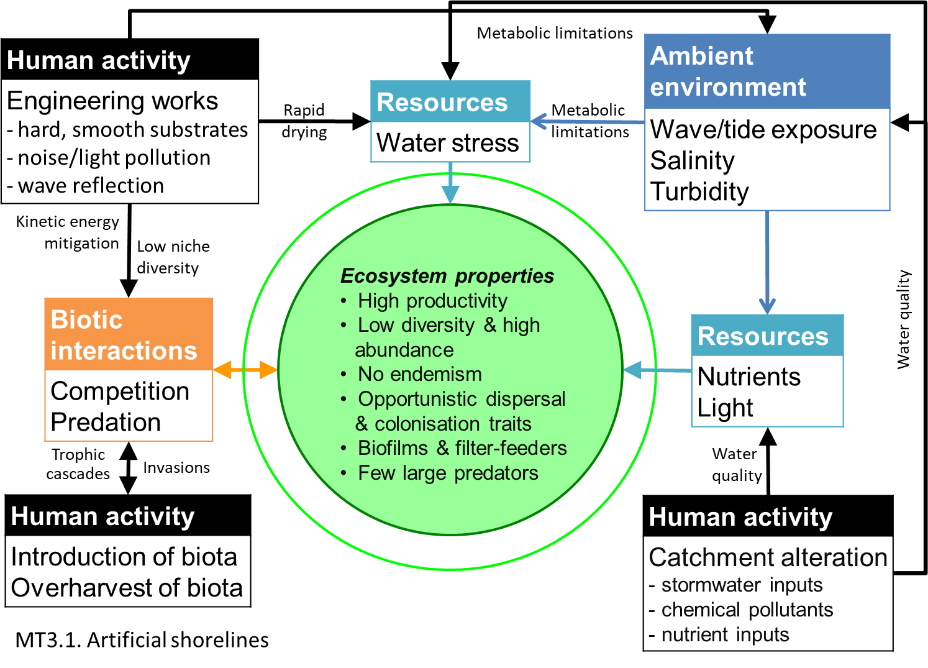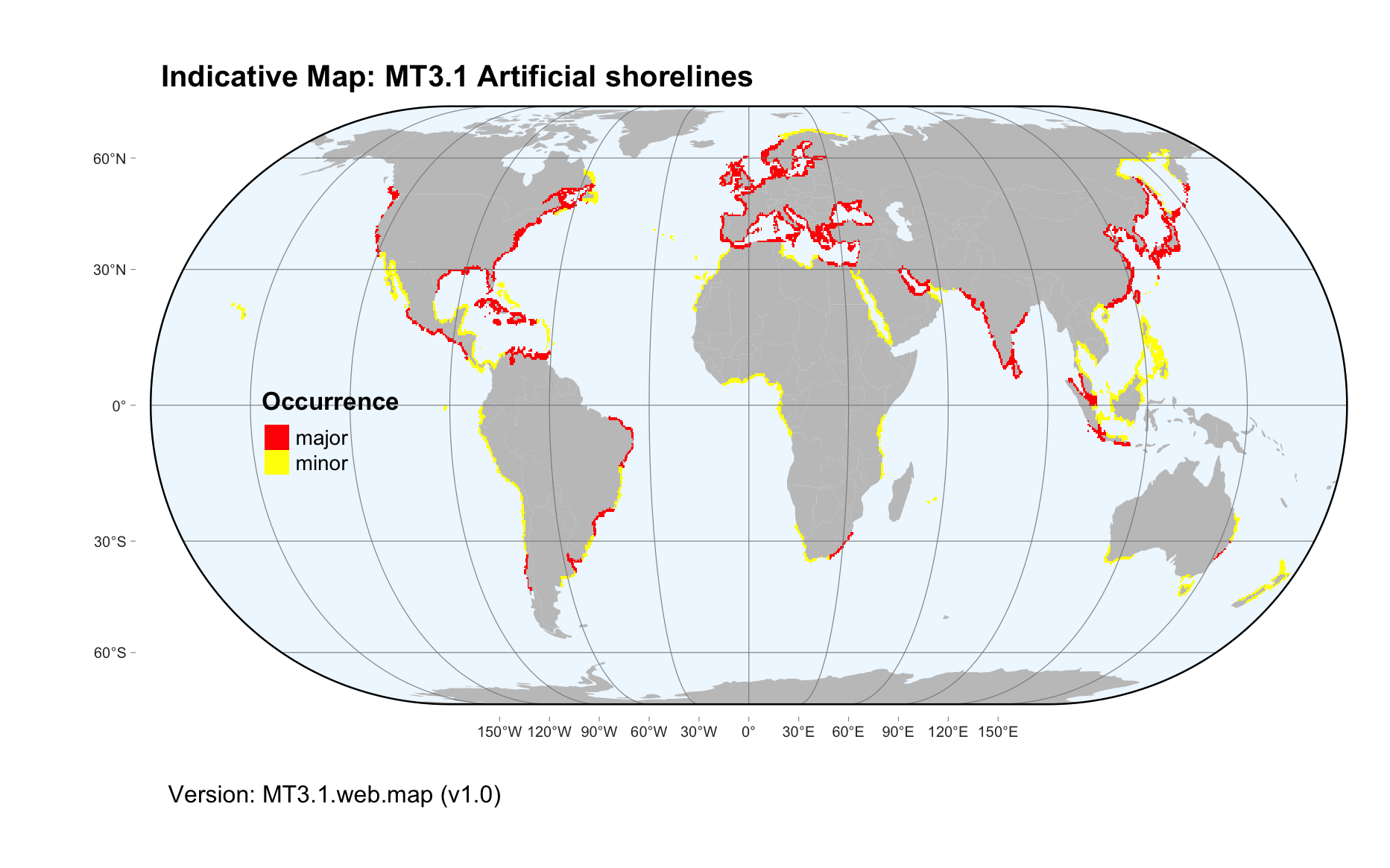Global ecosystem typology
Alternative site for the Global ecosystem typology with additional information for ecosystem profiles and indicative maps.
This site is maintained by jrfep
MT3.1 Artificial shorelines
Biome: MT3. Anthropogenic shorelines biome
Contributors:
(texts)
Constructed sea walls, breakwaters, piers, docks, tidal canals, islands and other coastal infrastructure create habitat for marine plants and animals around ports, harbours, and other intensively settled coastal areas. The waters may be polluted by urban runoff or industrial outflows. Opportunities for introduction of invasive species e.g. through shipping mean that non-native species are common. Foodwebs are simple and dominated by species able to opportunistically colonise these structures through dispersal of eggs, larvae and spores. Commonly, these include algae and bacteria, and filter-feeders like sea-squirts and barnacles.
Key Features
Coastal infrastructure, such as seawalls, breakwaters, pilings and piers, extending from the intertidal to subtidal, supporting cosmopolitan sessile and mobile invertebrates and macroalgae on their hard surfaces, and in some instances serving as artificial reefs for fish.
Overview of distribution
Globally, along urbanised coastlines.
Profile versions
- v1.0 (2020-01-20): RT Kingsford; DA Keith
- v2.0 (2020-06-17): IM Suthers; MJ Bishop; LB Firth; KA Dafforn. DA Keith
- v2.01 ():
- v2.1 (2022-04-06): IM Suthers; MJ Bishop; LB Firth; KA Dafforn. DA Keith Full profile available at official site
Main references
Selected references for this functional group:
Dafforn KA, Glasby TM, Airoldi L, Rivero NK, Mayer-Pinto M, Johnston EL (2015) Marine urbanization: an ecological framework for designing multifunctional artificial structures. Frontiers in Ecology and the Environment 13: 82-90. DOI:10.1890/140050
Diagrammatic assembly model

Maps
Maps are indicative of global distribution patterns are not intended to represent fine-scale patterns. The maps show areas of the world containing major (coloured red) or minor occurrences (coloured yellow) of each ecosystem functional group. See general notes on maps.
There are 2 alternative versions of the indicative map for this functional group, please compare description and sources below.
MT3.1.IM.grid_v2.0
Datasets
- VIIRS-Night-Lights
- MEOW-2008
- SRTM30-PLUS-V11
Map references
VIIRS Day/Night Band Nighttime Lights, Version 1; Earth Observation Group, NOAA National Centers for Environmental Information (NCEI). Data-set
Spalding MD, Fox HE, Allen GR, Davidson N, Ferdaña ZA, Finlayson M, Halpern BS, Jorge MA, Lombana A, Lourie SA, Martin KD, McManus E, Molnar J, Recchia CA, Robertson J (2007) Marine ecoregions of the world: a bioregionalization of coastal and shelf areas. Bioscience 57: 573–583. DOI:10.1641/B570707
Becker JJ, Sandwell DT, Smith WHF, Braud J, Binder B, Depner J, Fabre D, Factor J, Ingalls S, Kim S-H, Ladner R, Marks K, Nelson S, Pharaoh A, Trimmer R, Von Rosenberg J, Wallace G, Weatherall P (2009) Global Bathymetry and Elevation Data at 30 Arc Seconds Resolution: SRTM30_PLUS, Marine Geodesy 32: 355-371. DOI:10.1080/01490410903297766
MT3.1.web.map_v1.0

Datasets
- MEOW-2008
Map references
Spalding MD, Fox HE, Allen GR, Davidson N, Ferdaña ZA, Finlayson M, Halpern BS, Jorge MA, Lombana A, Lourie SA, Martin KD, McManus E, Molnar J, Recchia CA, Robertson J (2007) Marine ecoregions of the world: a bioregionalization of coastal and shelf areas. Bioscience 57: 573–583. DOI:10.1641/B570707
Check: the Glossary / Profile structure / the public document